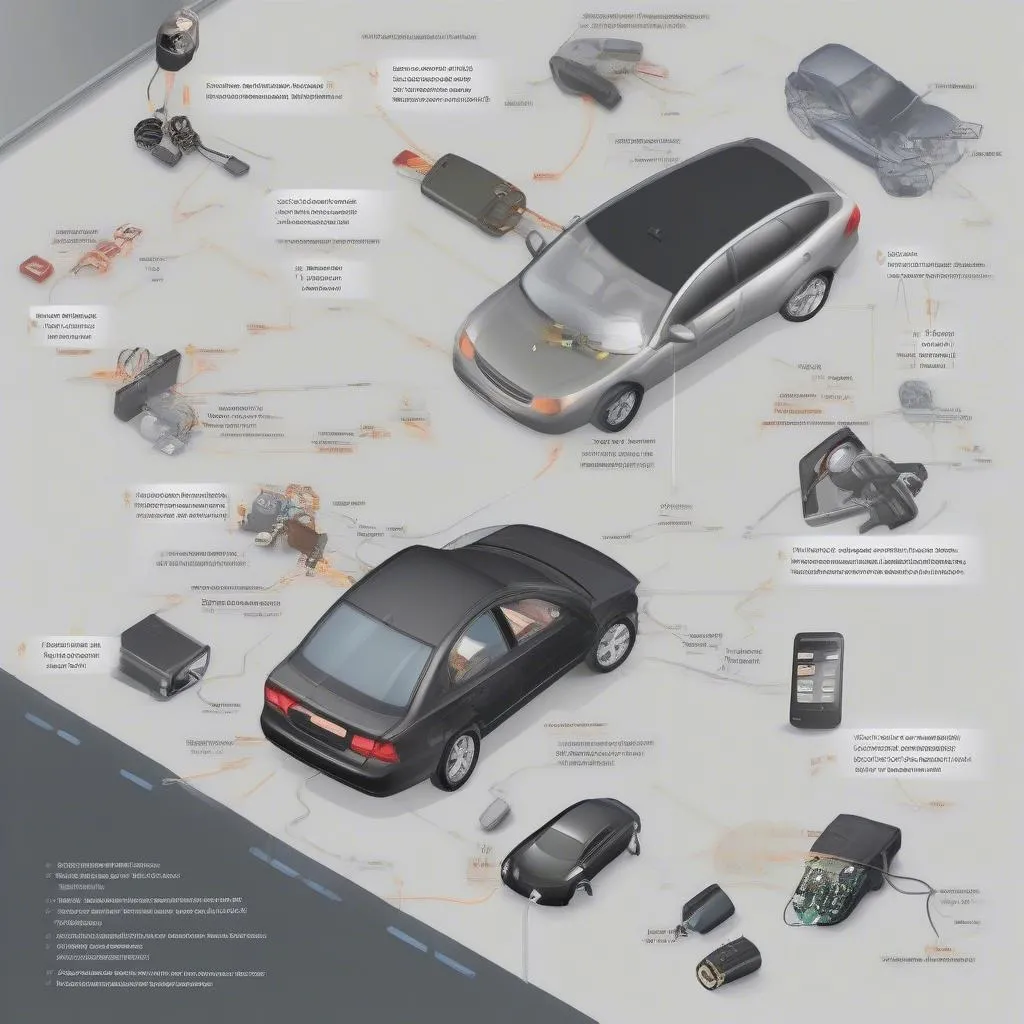If you’re a 2006 Toyota Prius owner, you know that seeing any warning light on your dashboard can be a cause for concern. One of the most common and potentially alarming warning lights is related to the braking system. This comprehensive guide will delve into the common reasons behind a 2006 Prius brake warning light, how to diagnose the issue, and potential solutions.
Understanding Your Prius’s Braking System
Before we dive into the specifics of the warning lights, it’s important to understand the basics of how your Prius’s braking system works. Unlike traditional gasoline cars, the 2006 Prius uses a regenerative braking system in conjunction with a conventional hydraulic system. This means that when you brake, the electric motor assists in slowing down the car, generating electricity that’s sent back to the battery.
Common Causes of a 2006 Prius Brake Warning Light
There are several reasons why your 2006 Prius brake warning light might illuminate. Let’s explore some of the most frequent culprits:
- Low Brake Fluid: Just like in traditional cars, low brake fluid level is a common trigger. This could be due to a leak in the system or simply needing a brake fluid flush and refill.
- Worn Brake Pads: As your brake pads wear down over time, the brake fluid level in the reservoir will naturally decrease. If the pads wear down too far, you may see the brake warning light.
- Faulty Brake Light Switch: The brake light switch is responsible for activating your brake lights when you press the pedal. A malfunctioning switch can not only prevent your brake lights from working but also trigger the brake warning light.
- Problem with the Regenerative Braking System: Since the Prius uses regenerative braking, a problem with this system, such as a faulty sensor or motor issue, can illuminate the warning light.
- Issue with the ABS System: The Anti-lock Braking System (ABS) is crucial for safe braking, especially in slippery conditions. If there’s an issue with the ABS control module, wheel speed sensors, or other ABS components, the brake warning light may turn on.
Diagnosing the Problem
Identifying the root cause of the brake warning light in your 2006 Prius often requires a bit of investigation. Here’s a step-by-step approach:
- Check the Brake Fluid Level: This is the easiest and most accessible check you can do yourself. Locate the brake fluid reservoir under the hood (refer to your owner’s manual) and visually inspect the fluid level. If it’s low, adding brake fluid might temporarily solve the issue, but it’s crucial to determine the underlying cause of the low fluid level.
- Inspect the Brake Pads: If you’re comfortable with basic car maintenance, you can visually inspect your brake pads. Look for significant wear or if they appear thinner than ¼ inch. However, if you’re unsure, it’s best to have a mechanic check them.
- Scan for Trouble Codes: Modern cars like your Prius store diagnostic trouble codes (DTCs) when a fault is detected. Using an OBD-II scanner, you can read these codes to pinpoint the source of the problem. This can be done at most auto parts stores or by a mechanic.
When to Seek Professional Help
While some causes of the brake warning light can be simple fixes, others require the expertise of a qualified mechanic, especially if it involves the regenerative braking system or ABS. If you’re unsure about any aspect of diagnosis or repair, it’s always best to err on the side of caution and consult a professional.
Remote Diagnostics and Software Solutions
In the digital age, advancements in automotive technology have led to remote diagnostic and software solutions that can address certain brake system issues. Some problems might be resolved with a software update or recalibration that can be done remotely by a specialized technician. This can save you a trip to the mechanic, especially for software-related issues.
brake system warning light prius
Prevention is Key
Like most car issues, prevention is often better than cure. Regular maintenance, including timely brake fluid flushes, brake pad replacements, and routine inspections, can go a long way in preventing brake warning light surprises and ensuring your 2006 Prius remains safe and reliable.
Conclusion
Seeing the brake warning light on your 2006 Prius doesn’t necessarily spell disaster. By understanding the common causes, taking a systematic approach to diagnosis, and knowing when to seek professional help, you can address the issue promptly and keep your Prius running smoothly. Remember, a well-maintained car is a safe car.
FAQs
1. Can I drive my 2006 Prius with the brake warning light on?
It’s not recommended. Driving with the brake warning light illuminated could be dangerous as it indicates a potential issue with your braking system. Have your car inspected by a mechanic as soon as possible.
2. How much does it cost to fix a brake warning light issue in a 2006 Prius?
The cost can vary greatly depending on the underlying cause. A simple brake fluid flush might cost under $100, while a complete brake system repair could cost several hundred dollars or more.
2006 toyota prius brake system warning light
3. How often should I change my brake fluid?
Toyota generally recommends changing the brake fluid in the Prius every 2 years or 30,000 miles, whichever comes first. However, consult your owner’s manual for specific recommendations for your model year.
4. Can I check and add brake fluid myself?
Yes, checking the brake fluid level is a simple process, and you can add brake fluid if needed. However, if you need to add fluid frequently, it indicates a potential leak that needs professional attention.
brake warning lamp on on my 2006 prius
5. Does the 2006 Prius have brake-by-wire technology?
No, the 2006 Prius does not have brake-by-wire technology. It utilizes a combination of regenerative and hydraulic braking systems.

